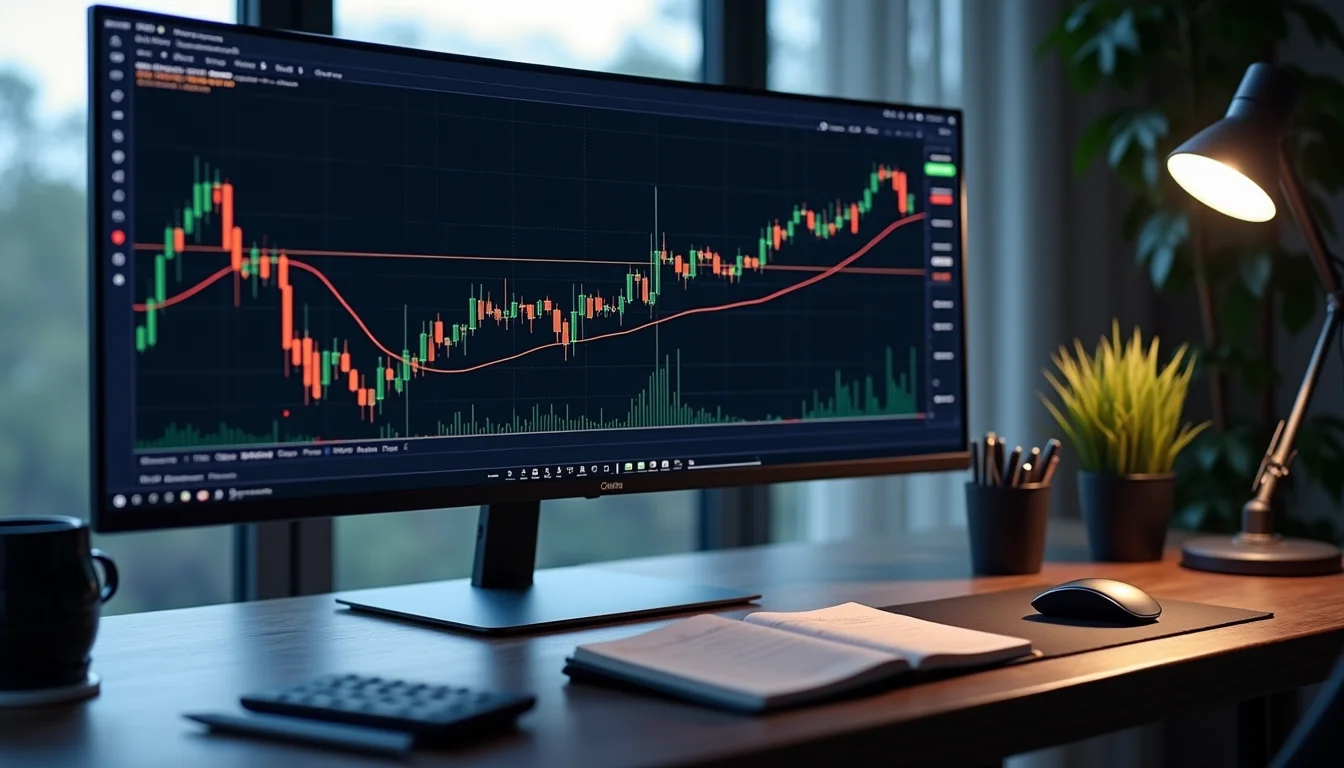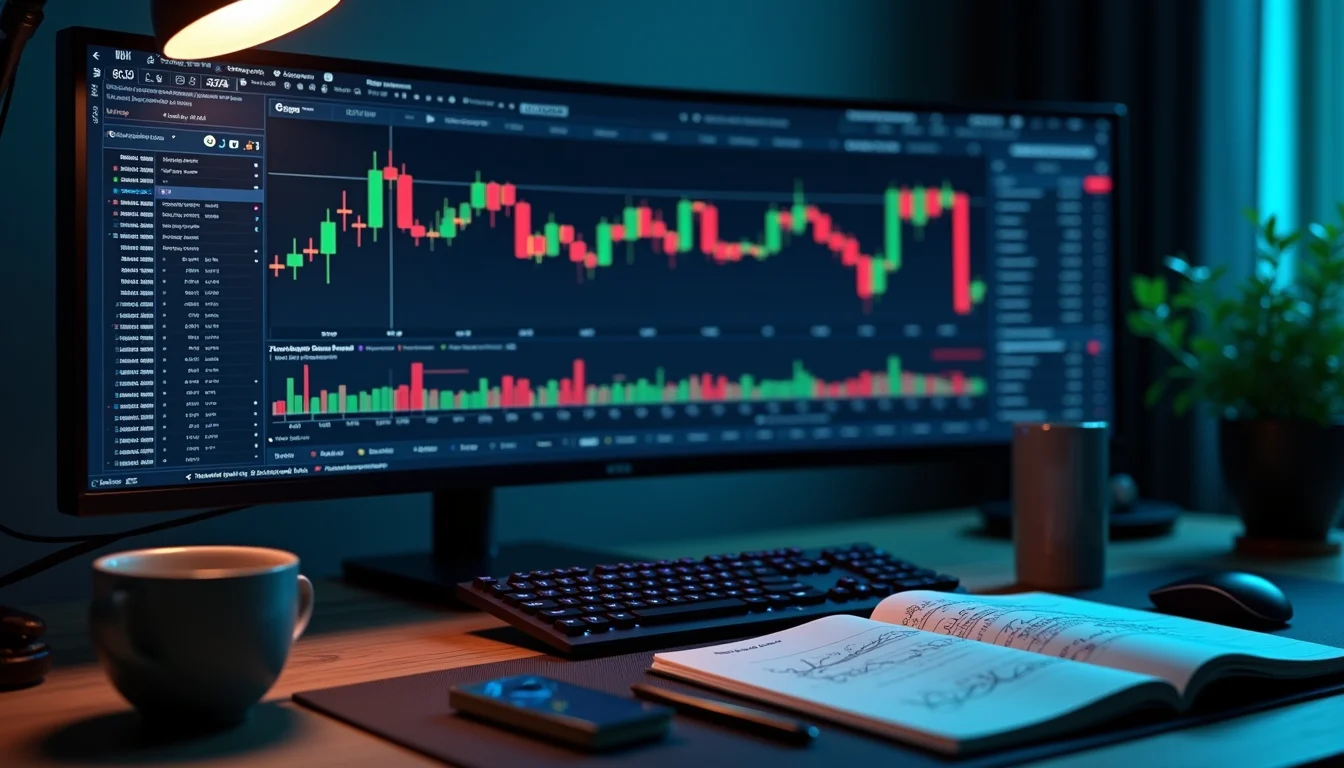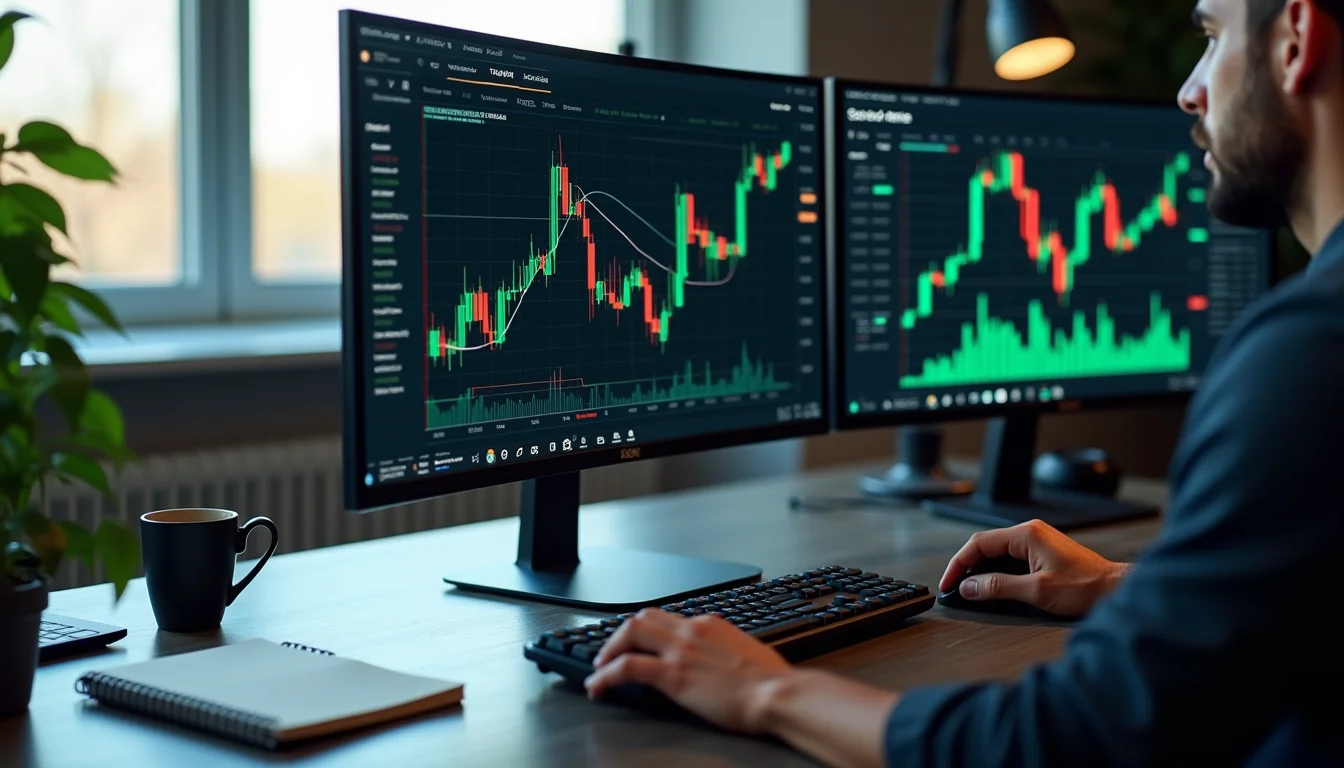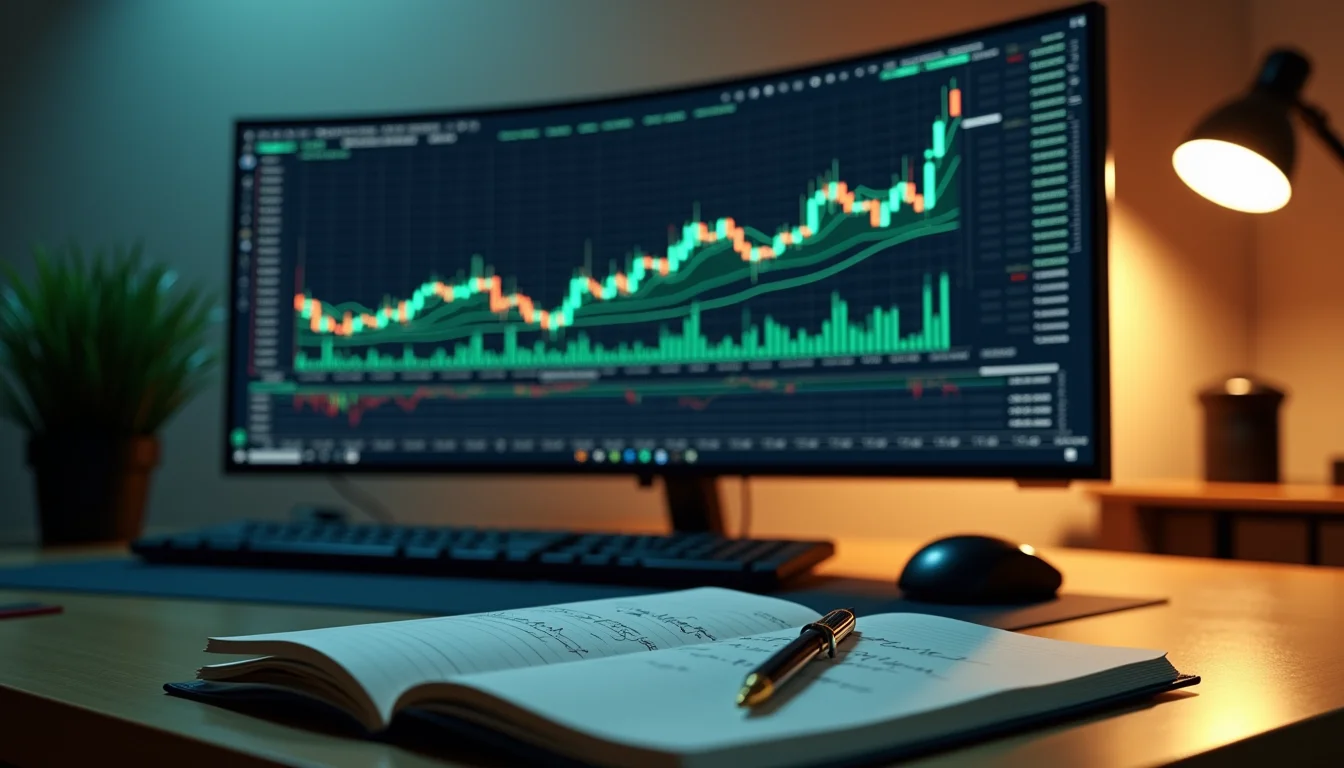The Myth of the Perfect System
I remember sitting at my trading desk seven years ago, staring at six different monitors while my account balance continued to bleed. I'd purchased every "holy grail" system, downloaded countless indicators, and followed dozens of gurus - all promising the best trading strategy that would make me rich overnight. Sound familiar?
Here's the uncomfortable truth I learned through losing real money: there's no single magic system that works for everyone. The real best trading strategy is one that aligns with your personality, risk tolerance, and lifestyle while providing consistent results over time. After mentoring hundreds of traders and managing seven-figure accounts, I've discovered what separates profitable traders from the perpetual losers.
In this guide, I'll walk you through the exact framework I use to develop and test trading strategies, the common mistakes that wipe out 90% of traders in their first year, and how you can build a system that actually works in live markets. We'll cover everything from entry techniques to position sizing, with real examples from my trading journal.
Understanding Strategy Foundations
Before we dive into specific approaches, let's establish what makes any trading strategy viable long-term. I've seen too many beginners jump from system to system without understanding these core principles.
Market Edge and Statistical Advantage
Every profitable strategy has some form of edge - a statistical advantage that, when executed consistently, produces positive expectancy. My edge comes from combining multiple time frame analysis with volume profiling, giving me about a 58% win rate with a 1.8:1 reward-to-risk ratio. That means for every dollar I risk, I make $1.80 on winning trades.
Your edge doesn't need to be complicated. One of my students trades nothing but the first hour range break on ES futures and maintains a 63% win rate. Another focuses solely on GBP/JPY during London session and averages 12% monthly returns. The key is finding something repeatable and sticking to it.
Time Frame Alignment
One of the biggest mistakes I see beginners make is mismatching their strategy with their available time. If you have a full-time job, don't try to scalp the 1-minute chart. I learned this the hard way when I nearly got fired for watching charts during meetings.
Here's how I break it down:
- Position trading: 1-4 hours weekly analysis, holds for weeks/months
- Swing trading: 30-60 minutes daily analysis, holds 2-10 days
- Day trading: 2-6 hours screen time, closes all positions daily
- Scalping: 4-8 hours screen time, seconds to minutes holding period
I personally settled on swing trading because it gives me the freedom to travel while still capturing meaningful moves. Last month, I took a 7-day vacation while my EUR/USD position netted 284 pips.
Proven Strategy Archetypes That Work
Through years of testing and refining, I've identified several strategy types that consistently produce results when properly executed. Let me walk you through the ones that have stood the test of time in my own trading.
Trend Following Systems
Trend following remains one of the most reliable approaches, especially for beginners. The concept is simple: buy during uptrends, sell during downtrends. My preferred method uses the 20 and 50 EMA crossover on the 4-hour chart, confirmed by volume analysis.
Here's a real example from last week: Gold was trading at $2,340 when the 20 EMA crossed above the 50 EMA on the 4H chart. Volume was increasing on up moves and decreasing on pullbacks - classic trend behavior. I entered at $2,345 with a stop at $2,320 and target at $2,400. The trade hit my target in three days for a 2.3R gain.
The key with trend following is accepting that you'll miss the exact bottom and top. I typically capture 60-70% of major moves, which is more than enough for consistent profits.
Mean Reversion Strategies
When markets get overextended, they tend to snap back toward their average prices. This is the foundation of mean reversion trading. I use Bollinger Bands with RSI to identify these opportunities, looking for prices touching the outer bands while momentum indicators show divergence.
Last month, USD/CAD reached the upper Bollinger Band on the daily chart while RSI showed bearish divergence. I shorted at 1.3780 with a tight 35-pip stop, targeting the middle band at 1.3680. The pair reversed exactly as anticipated, and I closed half position at target, moving stop to breakeven on the remainder.
Mean reversion works beautifully in ranging markets but can be dangerous in strong trends. I only use it when ADX is below 25, indicating weak trend conditions.
Breakout Trading Methods
Breakouts capture the beginning of new trends and can produce explosive moves. My approach focuses on consolidation breakouts with volume confirmation. I look for assets that have been trading in a tight range for at least 2-3 weeks, then break out on above-average volume.
NVIDIA provided a perfect example last quarter. The stock consolidated between $890 and $920 for three weeks before breaking above $925 on 150% average volume. I entered at $928 with a stop at $899. The trade ran to $1,050 over the next month - a massive 12R return.
The challenge with breakouts is false moves. About 40% of my breakout trades get stopped out, but the winners more than compensate with 3-5R average gains.
Risk Management: The Real Secret Sauce
Here's where most traders fail spectacularly. They focus entirely on entries while ignoring position sizing and risk control. In my first year, I had trades with 80% win rates that still lost money because my losses were three times larger than my wins.
The 1% Rule and Position Sizing
I never risk more than 1% of my account on any single trade. This seems conservative until you experience a string of losses - which every trader eventually faces. With 1% risk, I can withstand 20 consecutive losses and still have 80% of my capital intact.
My position sizing formula is simple: (Account Balance × 0.01) ÷ (Entry Price - Stop Loss) = Number of Shares/Units. For a $50,000 account buying stock at $100 with a $95 stop: ($50,000 × 0.01) ÷ ($100 - $95) = 100 shares.
Risk-Reward Ratios That Actually Work
I aim for minimum 1:2 risk-reward on every trade. This means my profit target is at least twice my stop loss distance. With a 50% win rate, 1:2 R:R produces solid profits. My actual stats show 55% win rate with 1:2.3 average R:R across all trades.
Here's why this matters: if you risk $100 to make $200 and win 50% of trades, after 100 trades you've made $10,000 profit ($200 × 50 wins = $10,000, $100 × 50 losses = $5,000, net $5,000).
Building Your Personal Trading Plan
A strategy without a plan is like a car without a driver - it goes nowhere. Your trading plan is your rulebook, and I've found that the most successful traders are the most disciplined about following theirs.
Defining Your Entry and Exit Rules
Every trade must have predefined entry, stop loss, and take profit levels before you click the buy button. I use a checklist system that includes:
- Primary setup condition (e.g., EMA crossover)
- Confirmation signal (volume, momentum indicator)
- Risk-reward assessment (minimum 1:2)
- Market context (trending or ranging environment)
If any item on the checklist isn't satisfied, I pass on the trade no matter how tempting it looks. This discipline has saved me from countless bad decisions.
Journaling and Performance Tracking
I've maintained a detailed trading journal since my first trade, and it's been invaluable for improving my performance. Every entry includes:
- Setup type and timeframe
- Entry/exit prices and times
- Risk-reward ratio
- Emotional state during trade
- Screenshots of the chart
- Lessons learned
Reviewing my journal every Sunday helps me identify patterns in both winning and losing trades. Last quarter, I noticed that 70% of my losing trades occurred during Asian session - now I avoid trading during those hours entirely.
Advanced Strategy Refinement Techniques
Once you have a solid foundation, these advanced techniques can significantly boost your performance. I've developed these through years of experimentation and data analysis.
Multiple Time Frame Analysis
I never enter a trade without checking at least three time frames. My standard approach uses:
- Higher timeframe (4H/Daily) for trend direction
- Trading timeframe (1H) for entry signals
- Lower timeframe (15M) for precise entry
For example, if daily trend is up, 1H shows pullback to support, and 15M gives reversal confirmation - that's a high-probability setup. This approach has increased my win rate from 52% to 58% over the past two years.
Correlation and Diversification
Understanding how different assets move relative to each other helps avoid overexposure. I regularly check correlations between my positions using tools available on TradingView's correlation matrix.
Last month, I noticed I had long positions in AUD/USD, NZD/USD, and copper - all highly correlated. I reduced position sizes accordingly, which saved me significant drawdown when China economic data surprised negatively.
Psychology and Emotional Control
Trading is 80% psychology, 20% methodology. I've seen brilliant strategists fail because they couldn't control their emotions, and average traders succeed through sheer discipline.
Handling Losses and Drawdowns
Every trader experiences losses - it's part of the business. My worst drawdown was 18% over three weeks, during which I took 11 consecutive losses. What saved me was sticking to my risk management rules and trusting my statistics.
The key is understanding that losses are the cost of doing business, like a restaurant's food costs. You don't stop running a restaurant because you have to buy ingredients, and you shouldn't stop trading because you have losing trades.
Avoiding Revenge Trading
After a significant loss, the urge to "get back" can be overwhelming. Early in my career, I once lost $2,000 on a bad EUR trade, then immediately jumped into three oversized positions trying to recover, turning that $2,000 loss into an $8,000 disaster.
Now, after any loss exceeding my daily drawdown limit (2%), I walk away from the screens for at least four hours. This cooling-off period has prevented countless emotional trading mistakes.
Advanced Professional Tips
After you've mastered the basics, these professional techniques can take your trading to the next level. I wish someone had shared these with me when I was starting out.
Scale in, scale out positioning: Instead of entering full position at once, I typically enter 50% at initial signal, then add 25% on retest of entry level, and final 25% on confirmation of move. Similarly, I take profits in thirds - first at 1R, second at 2R, and let the final portion run with trailing stop.
Seasonal and time-based adjustments: Markets have predictable patterns based on time of day, week, and year. I've found that my trend strategies work best during London and New York overlap (8 AM - 12 PM EST), while mean reversion performs better during Asian session. August and December typically have lower volatility, so I reduce position sizes accordingly.
Custom indicator development: While basic indicators work fine, developing custom Pine Script indicators tailored to my specific strategy has been game-changing. I've created proprietary volume-based momentum oscillators that give me earlier signals than standard indicators.
Algorithmic backtesting: Before risking real money on any new strategy, I now run extensive backtests using historical data. My current swing trading system was tested on 12 years of data across 28 currency pairs before I traded it live. The backtest showed 62% win rate with 1.8 average R:R - and live trading has matched those numbers almost exactly.
Bringing It All Together
The journey to finding your personal best trading strategy isn't about discovering some secret system - it's about developing a methodology that fits who you are as a trader. What works for my personality and schedule might not work for yours, and that's perfectly normal.
Start with one simple approach, master it through extensive practice on demo, then gradually incorporate additional elements. The traders who succeed long-term aren't the ones constantly jumping between systems - they're the ones who become experts at executing their chosen methodology with relentless consistency.
Remember that trading is a marathon, not a sprint. My first profitable year came after three years of learning, losing, and refining. The key is continuous improvement and strict risk management.
If you're looking for proven starting points, check out our collection of TradingView strategies that have been backtested and optimized for various market conditions. Many of our customers use these as foundations to build their personalized systems.
What's the biggest challenge you're facing in developing your trading strategy? Share your experience in the comments below - I read every one and often provide personalized feedback.
Common Questions From Developing Traders
How long should I demo trade before going live? Most traders need 3-6 months of consistent demo profitability across different market conditions. I required six months showing at least 55% win rate with proper risk management before risking real capital. The key is treating demo as seriously as live trading - same position sizes, same psychology.
What's the minimum account size to start trading seriously? While you can technically start with any amount, I recommend at least $5,000 to properly implement position sizing and risk management. With smaller accounts, the temptation to overtrade becomes overwhelming. My first properly funded account was $7,500, which allowed me to risk $75 per trade while still taking meaningful position sizes.
How many pairs or stocks should I trade? Beginners should master 1-2 instruments before expanding. I traded only EUR/USD and Gold for my first two years. Now I actively monitor 12 currency pairs and 8 stocks, but that took years to build up to. Depth of knowledge beats breadth every time in trading.
How do I know when to abandon a strategy? Every strategy has losing periods - what matters is whether it's performing within expected statistical parameters. I give any new strategy at least 100 trades before evaluation. If after 100 trades it's performing significantly worse than backtest results (more than 15% deviation), I'll either refine it or move on.
What's the single most important improvement I can make? Without question, meticulous risk management. I've seen traders with mediocre entry timing become consistently profitable through excellent position sizing and stop loss placement. Meanwhile, brilliant market callers blow up accounts because they risk too much on single trades. Focus on protecting capital first, making money second.



